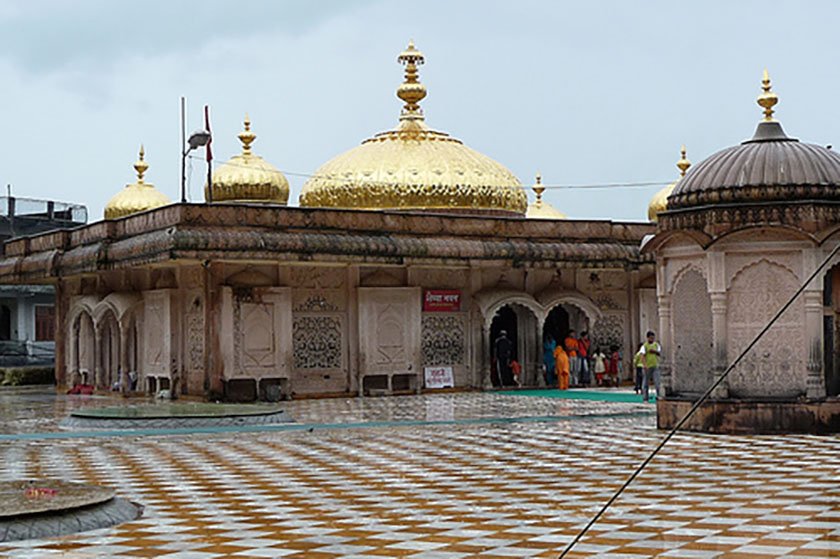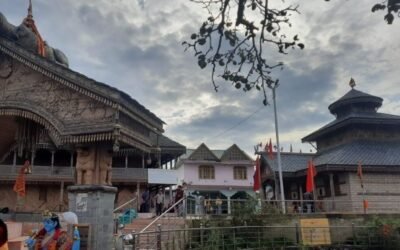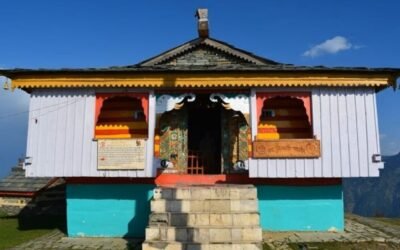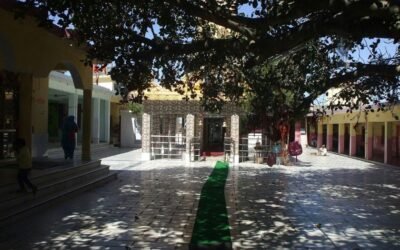In the heart of the Kangra Valley, where the Shivalik hills cradle ancient secrets, burns a flame that has never gone out. Jwalamukhi Temple, one of the most revered Shakti Peethas in India, is a shrine unlike any other—a temple without an idol, where the goddess manifests as a natural, eternal flame.
🌄 Location & Accessibility
- Location: Jwalamukhi town, Kangra district, Himachal Pradesh
- Altitude: ~610 meters above sea level
- Nearest Town: Kangra (30 km), Dharamshala (56 km)
- How to Reach:
- By Road: Well-connected by buses and taxis from Kangra, Dharamshala, and Pathankot
- By Rail: Nearest broad-gauge station is Pathankot (123 km); narrow-gauge at Kangra (2 km)
- By Air: Gaggal Airport, Dharamshala (46 km)
🛕 Mythological Significance
According to Hindu mythology, when Goddess Sati immolated herself at her father Daksha’s yagna, Lord Vishnu dismembered her body to calm Lord Shiva’s grief-stricken rage. Her tongue is believed to have fallen at this very spot, making it one of the 51 Shakti Peethas.
Unlike other temples, Jwalamukhi Devi is worshipped in the form of nine eternal flames—each representing a different form of the goddess:
Mahakali, Annapurna, Chandi, Hinglaj, Vidhya, Basni, Mahalakshmi, Saraswati, Ambika, and Anji Devi.
🔥 The Eternal Flame
The temple’s sanctum houses natural jets of flame emerging from fissures in the rock. These flames, burning continuously for centuries, are considered the living embodiment of the goddess. There is no idol—only the sacred fire, which devotees offer milk, water, and sweets.
Even Mughal emperor Akbar once tried to extinguish the flames, but failed. Humbled, he offered a golden umbrella to the goddess, which legend says turned to copper as a sign of divine rejection.
🏛️ Architectural Highlights
- A golden-domed roof and silver-plated doors adorn the temple
- A pit-shaped sanctum with flames emerging from the rock
- Two lion statues guard the entrance
- A massive brass bell gifted by the King of Nepal hangs in the mandap
- The temple complex includes shrines to Gorakh Nath, Raghunathji, and Ashtabhuja Devi
🎉 Festivals & Rituals
Navratri (Chaitra & Ashwin)
- The temple hosts two grand fairs during Navratri
- Devotees circle the Jwala Kund, offer red flags (dhwajas), and perform havan
- Folk dances, music, and wrestling matches add to the festive spirit
Daily Aartis
- Five aartis are performed daily, including the special Saiyan Ki Aarti at night, where the goddess’s bed is decorated with flowers and ornaments
🏞️ Nearby Attractions
- Nagini Mata Temple: 4.5 km uphill, known for its annual fair
- Chaumukha Temple: 22 km away, dedicated to Lord Shiva
- Baglamukhi Temple, Bankhandi: 36 km from Jwalamukhi
- Nadaun & Panj Teerthi: Sites of historical and spiritual interest
🙏 Spiritual Experience
Jwalamukhi Temple is not just a place of worship—it’s a living miracle. The sight of the eternal flame, untouched by time or elements, evokes awe and surrender. It’s a reminder of the goddess’s eternal presence and power, burning bright in the hearts of her devotees.




